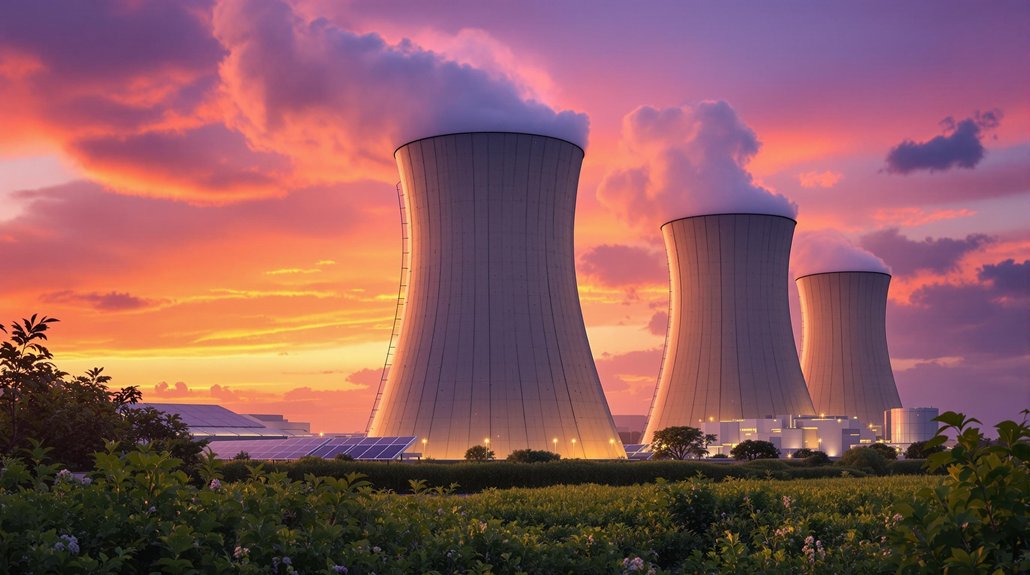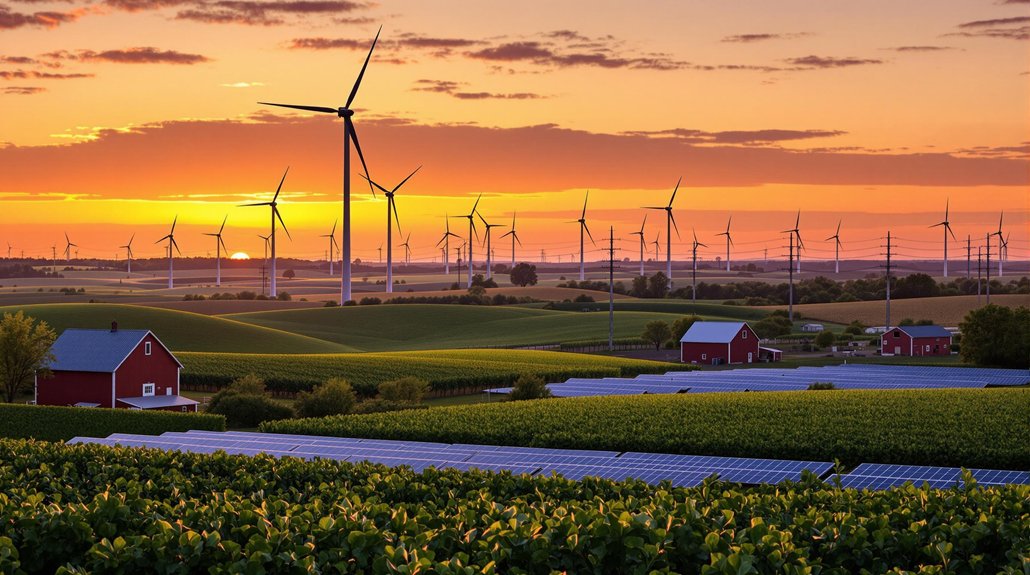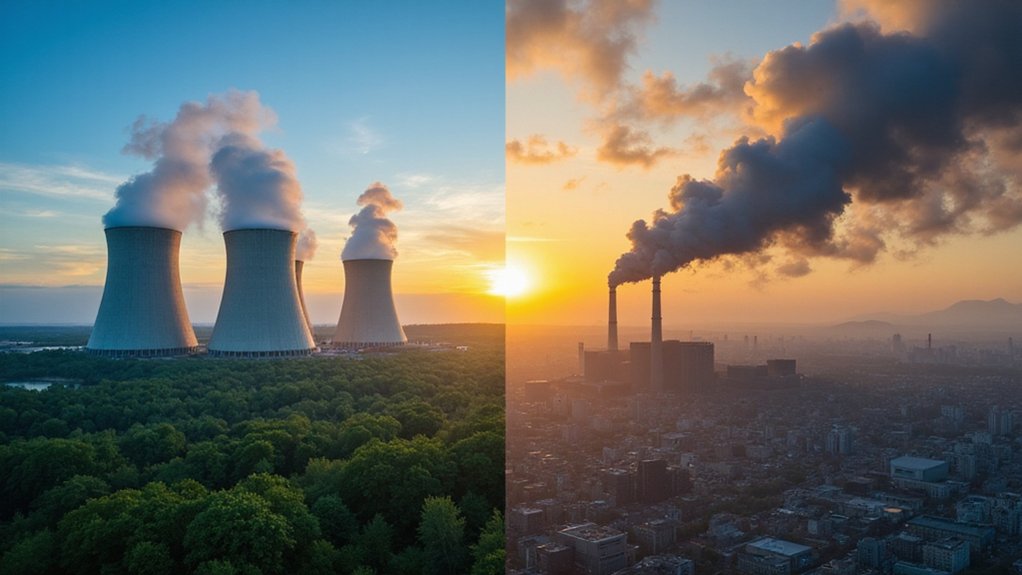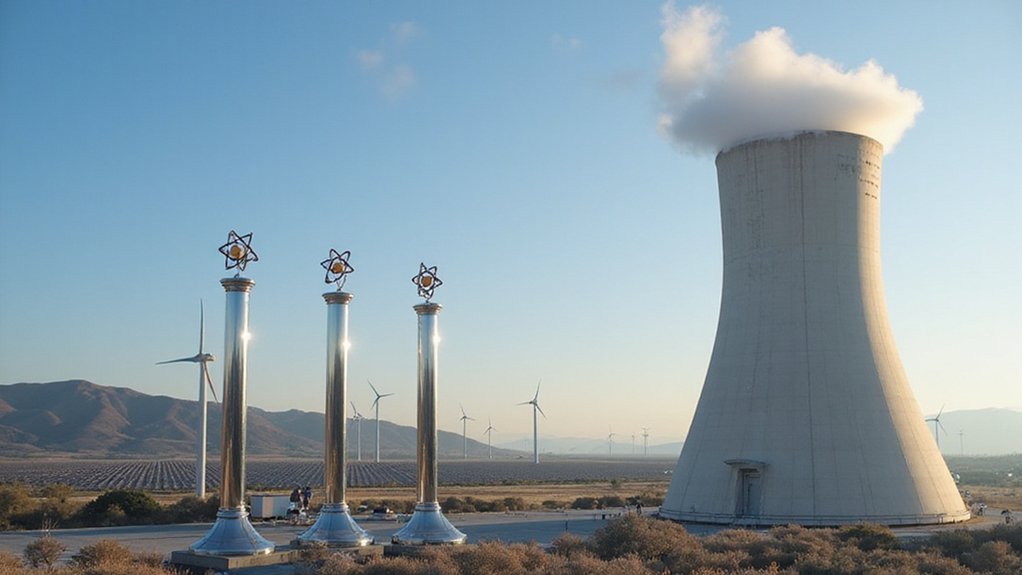Nuclear power is making a surprising comeback. With global electricity demand projected to jump 50% by 2050 and data centers gobbling up energy, nations are reconsidering the atom. Nuclear offers zero-carbon power 24/7, unlike weather-dependent renewables. Over 40 countries are now pursuing nuclear programs, with COP28 delegates pushing to triple capacity. Even post-Fukushima Japan is restarting reactors. Climate anxiety is trumping nuclear fears. The atomic renaissance is just warming up.
After years of languishing in the energy sector‘s doghouse, nuclear power is making a comeback. The world’s insatiable appetite for electricity—projected to grow a whopping 50% by 2050—has forced a serious rethink about those concrete behemoths we once vilified. Data centers alone will gobble up 8% of global electricity by 2030. That’s a lot of TikTok videos.
Turns out, the atom offers some pretty compelling advantages. Zero carbon emissions during operation. A mind-boggling 93% capacity factor that makes wind and solar look like slackers at 25-35%. And unlike those sprawling solar farms eating up precious real estate, nuclear plants are compact. They don’t take days off when the sun hides or the wind stops. Imagine that.
Nuclear delivers clean energy 24/7 with a footprint that makes renewables blush.
The policy winds have shifted too. Over 40 countries are now chasing nuclear programs like it’s the new crypto. COP28 delegates bold-faced declared they’d triple nuclear capacity by 2050. Even the EU—yes, that bastion of green virtue—classified nuclear as a “green” investment. Japan, still healing from Fukushima, is firing up old reactors. Talk about a plot twist.
Innovation is driving this renaissance. Small modular reactors promise nuclear power without the mega-construction headaches. Advanced designs make meltdowns increasingly unlikely. New reactor technologies with passive safety systems are revolutionizing industry standards. Some tech even recycles the scary waste everyone frets about. The industry that seemed frozen in 1970s technology is finally getting its software update.
Economics matter, and nuclear’s looking better there too. When natural gas prices go berserk, those steady atom-splitting costs seem downright reasonable. Plants last 60-80 years—practically geological timeframes in the energy world. The IEA predicts that 2025 will mark an all-time high in nuclear power generation, signaling the industry’s resurgence after years of decline.
Public perception? Shifting fast. A solid 57% of Americans now back nuclear energy. Turns out, climate anxiety trumps nuclear jitters for many folks. Younger generations, raised on apocalyptic climate forecasts rather than Cold War fears, are surprisingly pro-atom. With global temperatures already 1.45 degrees Celsius above pre-industrial levels, the urgency for low-carbon energy solutions has never been clearer.
Challenges remain, obviously. The upfront costs are still eye-watering. Regulations move at glacial pace. And nobody’s volunteering their backyard for waste storage.
But this nuclear renaissance? It’s happening, whether we’re ready or not.








